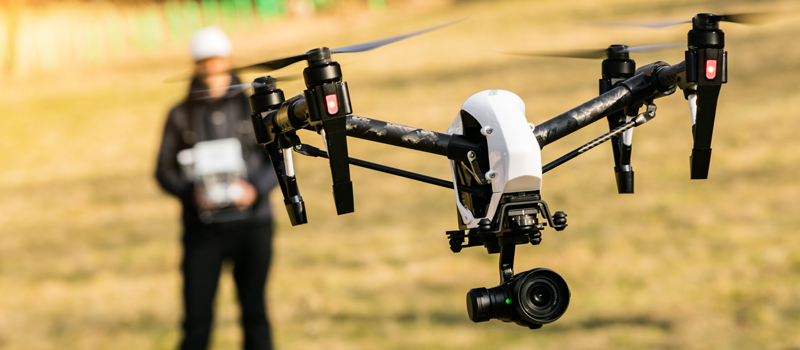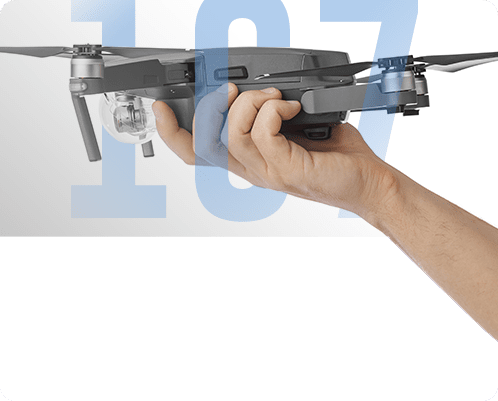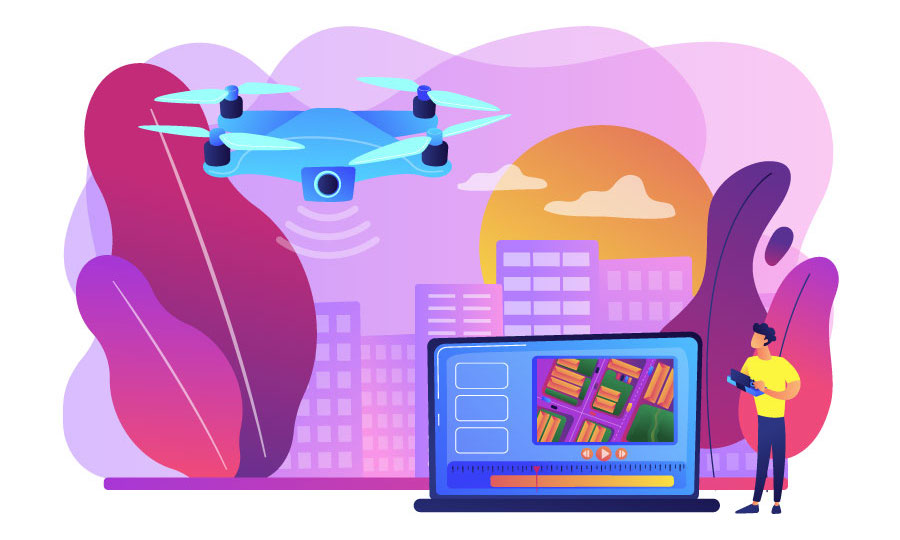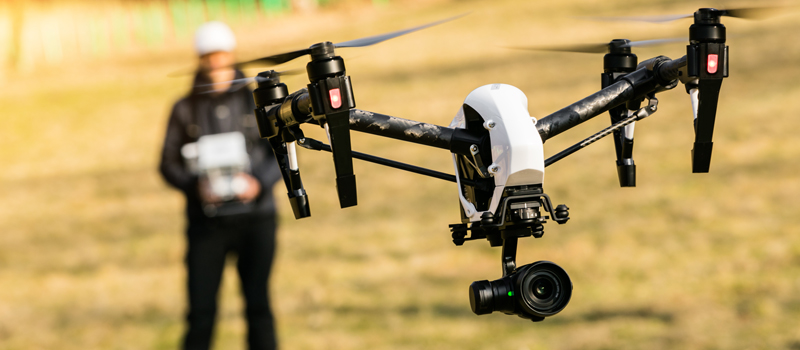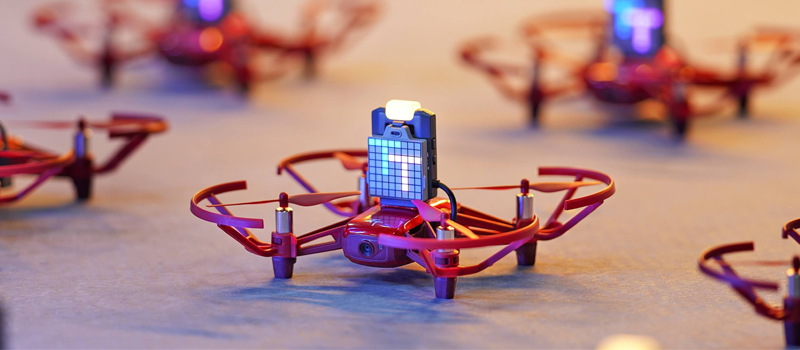Since the Part 107 rules were first implemented back in 2016, they have already been through several rounds of revisions and amendments. Part 107.41, referring to rules on airspace restrictions, is one of the sections that have been altered by the changes through the years.
In this article, we will be going through the specifics of Part 107.41 – how the law was stated, and the current rules with regards to what commercial drone pilots can or cannot do.
The text of Part 107.41
Part 107.41, officially titled “Operation in certain airspace”, is actually one of the shortest sections of the Part 107 rules. The full text of the rule is as follows:
“No person may operate a small unmanned aircraft in Class B, Class C, or Class D airspace or within the lateral boundaries of the surface area of Class E airspace designated for an airport unless that person has prior authorization from Air Traffic Control (ATC)”.
The conciseness of the rule underemphasis the importance of 107.41. Knowledge of the rules on airspace and corresponding restrictions is one of the most essential for drone pilots to help maintain the safety of the national airspace.
Since 2016, the landscape of commercial drone flight has greatly evolved. Along with this came new ways of complying with Part 107, particularly with complying with airspace restrictions. Some of the rules have also been relaxed to allow commercial drone pilots to fly under conditions that were previously restricted.
Airspace restrictions
The rule specifically states that UAS cannot operate in Class B, C, D, or within the lateral boundaries of the surface area of Class E airspace designated for an airport unless authorization has been granted by an ATC officer. We can break this statement down piece by piece to better understand it.
The reason for the restrictions in Class B, C, or D airspace is fairly obvious. These are types of controlled airspace that are found within airports. The exact type, size, and shape of controlled airspace depend on how much air traffic that airport receives regularly. This means that Class B airspace is often designated to very large airports like LAX or SFO.
Class E airspace is a bit more complex because it can exist in many forms. Class E airspace can be representation in sectional charts in four different ways:
| Symbol | Meaning |
| Class E airspace starting at the surface and extending up to 700 feet | |
 |
Class E airspace from 700 feet to 1200 feet |
| Class E airspace starting at 1200 feet | |
 |
Class E airspace at any altitude greater than 700 feet |
Of these four, you will want to be on the lookout for the dashed magenta line that indicates that the Class E airspace starts at the ground. This can be found in some airports as a surrounding circular area. According to the text of Part 107.41, UAS operations are prohibited within the boundaries of this type of Class E airspace if it is surrounding an airport. Some references have called this type of airspace “Class E2”.
There are also cases where Class E airspace is designated not for the airport but for the approach corridor to said airport. These are used for instrument approaches to an airport and have stricter visibility and cloud clearance requirements compared to Class G airspace. To emphasize the contrast between this type of surface-initiating Class E airspace, some references have called it “Class E3” or “Class E4”.
The complicated language used by Part 107.41 has made this matter quite contentious not just in the drone community but also in the general aviation community. If we’re being pedantic, any Class E airspace that does not include an airport or is not “Class E2” allows for UAS operations without having to request airspace authorization. This has been the general consensus and has been clarified by the FAA in a Memorandum released in 2018.
Airspace authorization
Part 107.41 contains a provision for flying a drone in controlled airspace as long as you have been granted prior authorization by Air Traffic Control. In the early months of Part 107, this meant that drone pilot had to call the relevant ATC office, relay their planned operations, and secure verbal approval.
The alternative was to file a waiver request for 107.41 through the FAA Drone Zone website. This method was more official but also meant that drone pilots had to wait for several weeks for their requests to be approved.
In 2017, the FAA introduced the Low Altitude Airspace Notification Capability (LAANC). This is a semi-automated system that allows drone pilots to make airspace authorization requests straight to the FAA and receive a response within seconds. LAANC requests can be made in any of the supported drone flight planning apps such as Airmap, Skyward, and Aloft.
With LAANC, drone pilots no longer had to plan way ahead for UAV operations that are planned in controlled airspace. The streamlined process also meant that ATC offices were no longer inundated with calls from drone pilots asking for approval. The LAANC privilege was initially only available to Part 107-licensed drone pilots but was eventually also opened to drone pilots who flew recreationally.
Perhaps the only limitation of LAANC is that it is not yet supported by all airports and facilities in the US and its territories. Currently, you can request airspace authorization through LAANC for more than 700 airports (you can view the list here).
If you need authorization for an airport that is not on the list, you will have to go through the manual process via FAA Drone Zone. The FAA recommends planning for a processing time of up to 90 days if you must go through this channel.
Flying at night with LAANC authorization
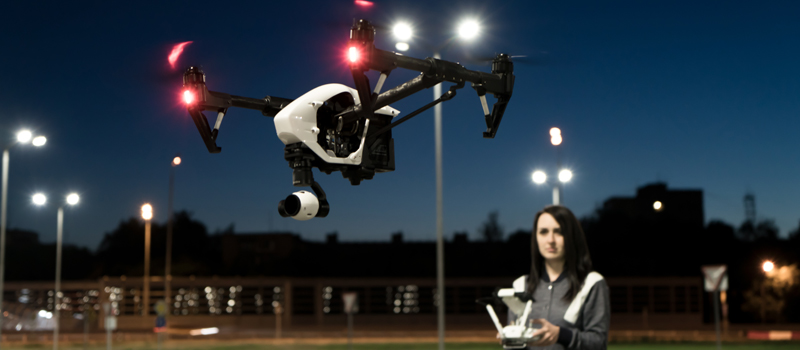
Previously, LAANC authorizations were only granted for daylight operations. With the FAA now relaxing their stance on night operations, LAANC authorizations can now be extended to night hours. However, there are a few pre-requisites.
Night flight training
The first requirement is that the requesting pilot should have already undergone night flight training. If you took the Part 107 knowledge on or later than March 2021, then you should have already taken the updated version of the test that includes questions on night flight. For those who have earned their remote flight certificates earlier than March 2021, you will have to take an additional course on the FAA Safety website.
Anti-collision lighting
Whether you’re flying in controlled or uncontrolled airspace, your drone will have to be outfitted with anti-collision lighting if you want to fly at night. Although most drones sold today come with stock lights, they are rarely bright enough to comply with the 3-statute mile required by the FAA.
The best option would be to install a third-party anti-collision light. There are several good options in the market with a variety of colors and flashing patterns. A comparison test we did back in March this year showed the Firehouse Arc V as the superior choice in terms of light dispersion and weatherproofing.
National authorization
Starting April 2021, LAANC-enabled apps were updated to provide the option for drone pilots to extend airspace authorization to nighttime. However, this was allowed under a National Authorization document waiving any further requirements that were effective only from April 21 to September 30, 2021.
Since the interim document has expired, drone pilots can now use LAANC to request day and night airspace authorization. The process is basically the same. The field for operation hours in the LAANC request should now allow you to request for hours before sunrise and after sunset.
The confluence of LAANC and revised rules on flying drones at night has given drone pilots increased freedom on where and when they can operate. There are extra processes involved, but this is a small price to pay for the increased flexibility of drone flight without compromising on airspace safety.
Final thoughts
107.41 is a deceptively short set of rules under Part 107. This gives a false impression that 107.41 is a simple matter. Once you start digging under the hood, you will realize that these rules on airspace restrictions can be a bit complex. Understanding them is also one of the most important things that a drone pilot should do.
Now that we have LAANC, complying with airspace requirements has become a lot easier for drone pilots. The new rules on night flight have also given drone pilots more flexibility on when they can fly, even if they have to do it in controlled airspace.
Note: Pilot Institute is part of the Amazon Associates program. We may earn a commission on sales, although this does not increase the cost for you.
